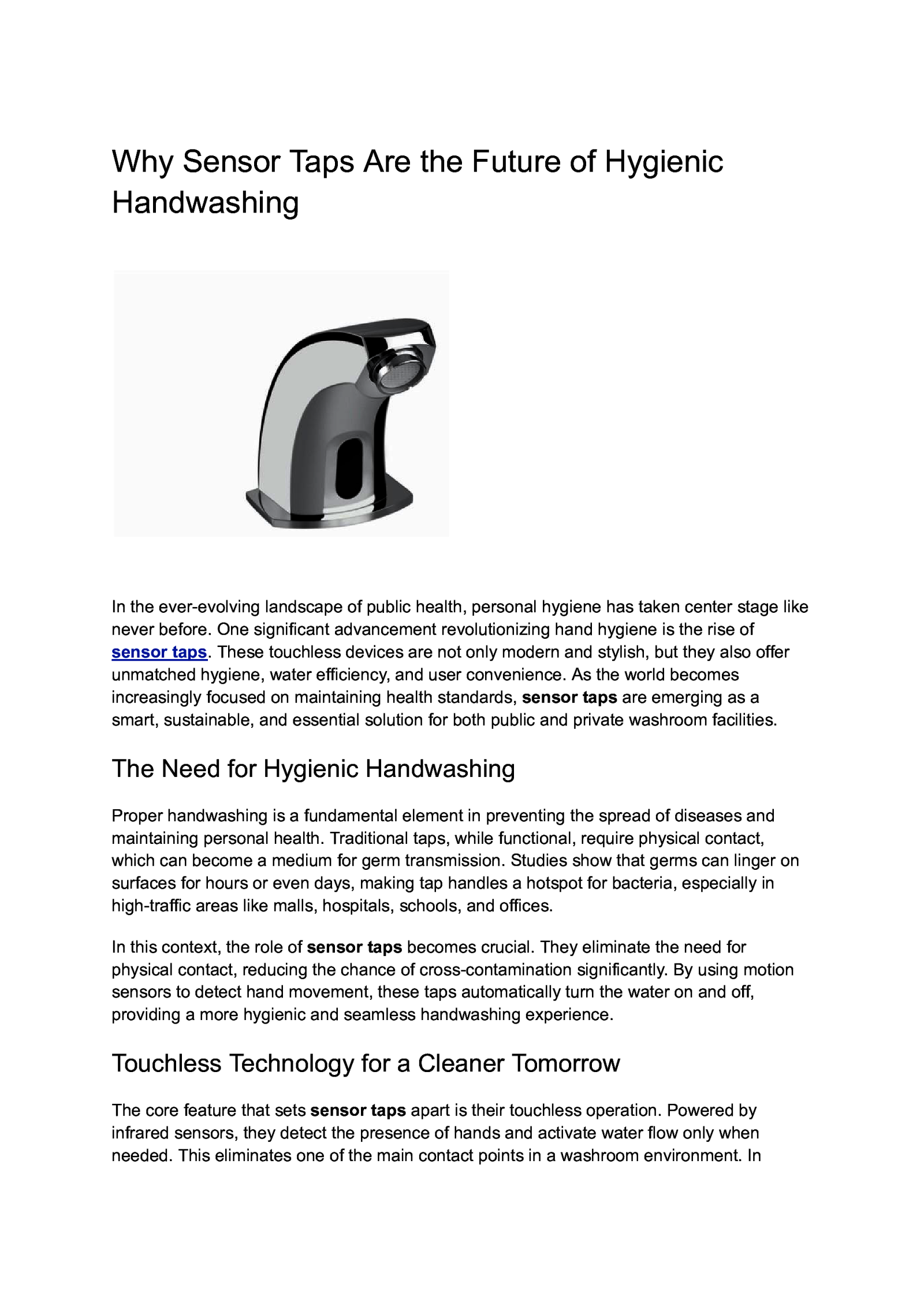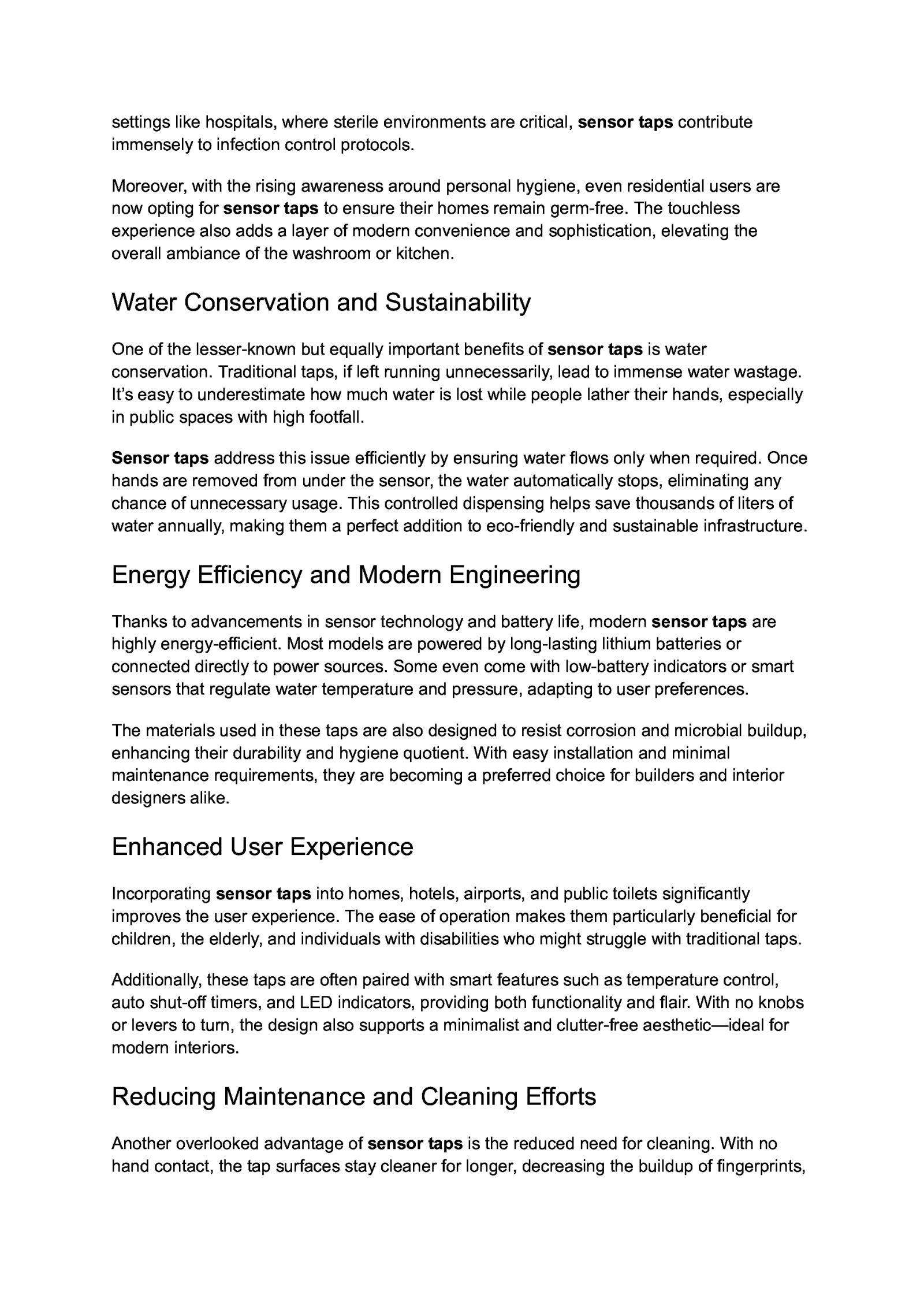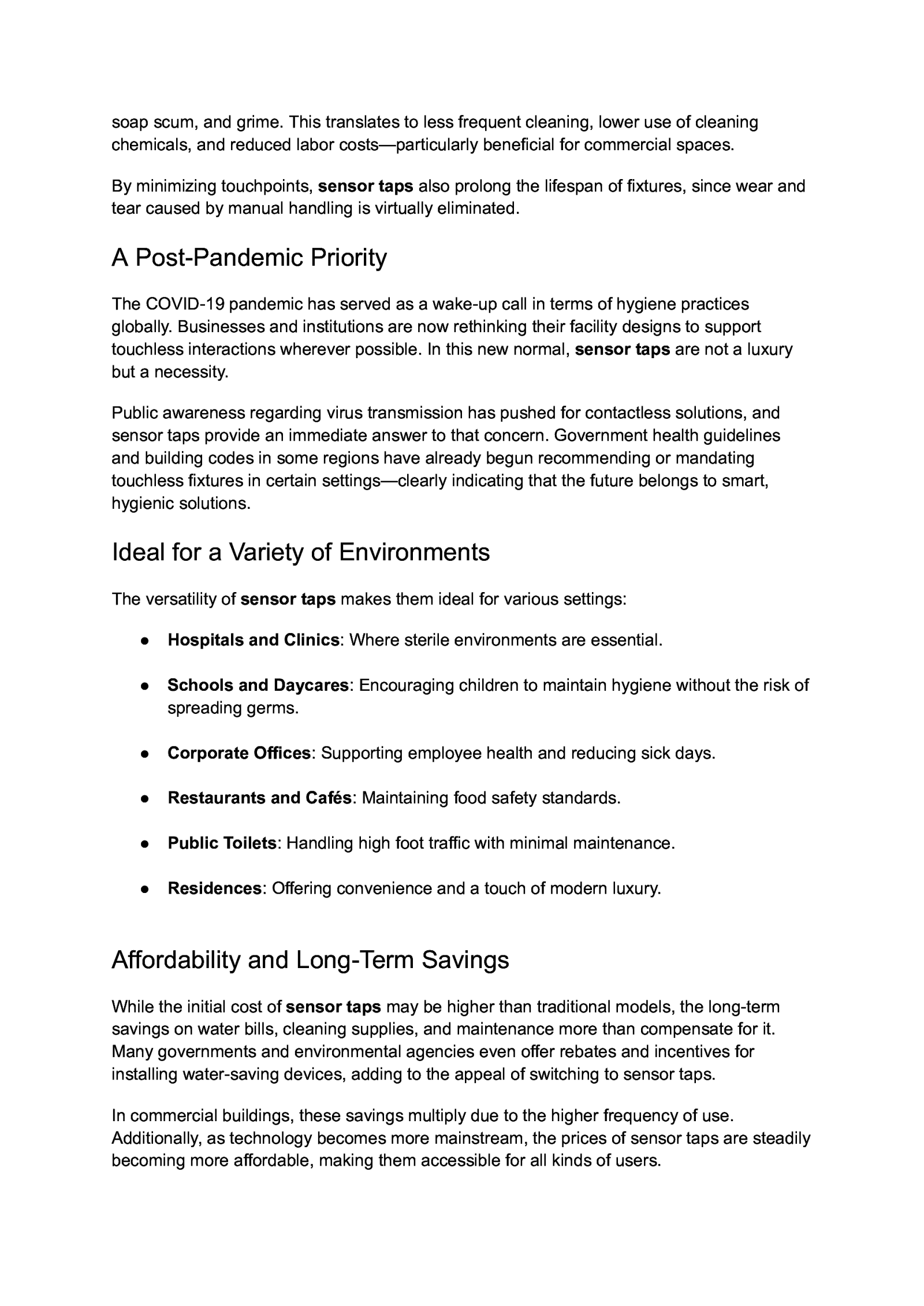Why Sensor Taps Are the Future of Hygienic Handwashing In the ever-evolving landscape of public health, personal hygiene has taken center stage like never before. One significant advancement revolutionizing hand hygiene is the rise of sensor taps. These touchless devices are not only modern and stylish, but they also offer unmatched hygiene, water efficiency, and user convenience. As the world becomes increasingly focused on maintaining health standards, sensor taps are emerging as a smart, sustainable, and essential solution for both public and private washroom facilities. The Need for Hygienic Handwashing Proper handwashing is a fundamental element in preventing the spread of diseases and maintaining personal health. Traditional taps, while functional, require physical contact, which can become a medium for germ transmission. Studies show that germs can linger on surfaces for hours or even days, making tap handles a hotspot for bacteria, especially in high-traffic areas like malls, hospitals, schools, and offices. In this context, the role of sensor taps becomes crucial. They eliminate the need for physical contact, reducing the chance of cross-contamination significantly. By using motion sensors to detect hand movement, these taps automatically turn the water on and off, providing a more hygienic and seamless handwashing experience. Touchless Technology for a Cleaner Tomorrow The core feature that sets sensor taps apart is their touchless operation. Powered by infrared sensors, they detect the presence of hands and activate water flow only when needed. This eliminates one of the main contact points in a washroom environment. In



